How to Curate Emotionally Resonant Art for Luxury Spaces: A Guide for Designers and Collectors
When people search for art for luxury spaces, they’re often thinking of statement pieces, coordinated palettes, and visual drama. But real luxury isn’t loud. And the best art doesn’t just match a room, it holds it.
In high-end interiors, art is more than aesthetics. It’s emotional architecture. It sets the mood, anchors the energy, and quietly shapes how the room makes people feel long after they’ve left. This is not about filling walls. This is about creating resonance.
If you’re a designer, collector, or curator searching for art for luxury spaces that brings emotional intelligence, presence, and depth into a room, this guide is for you.
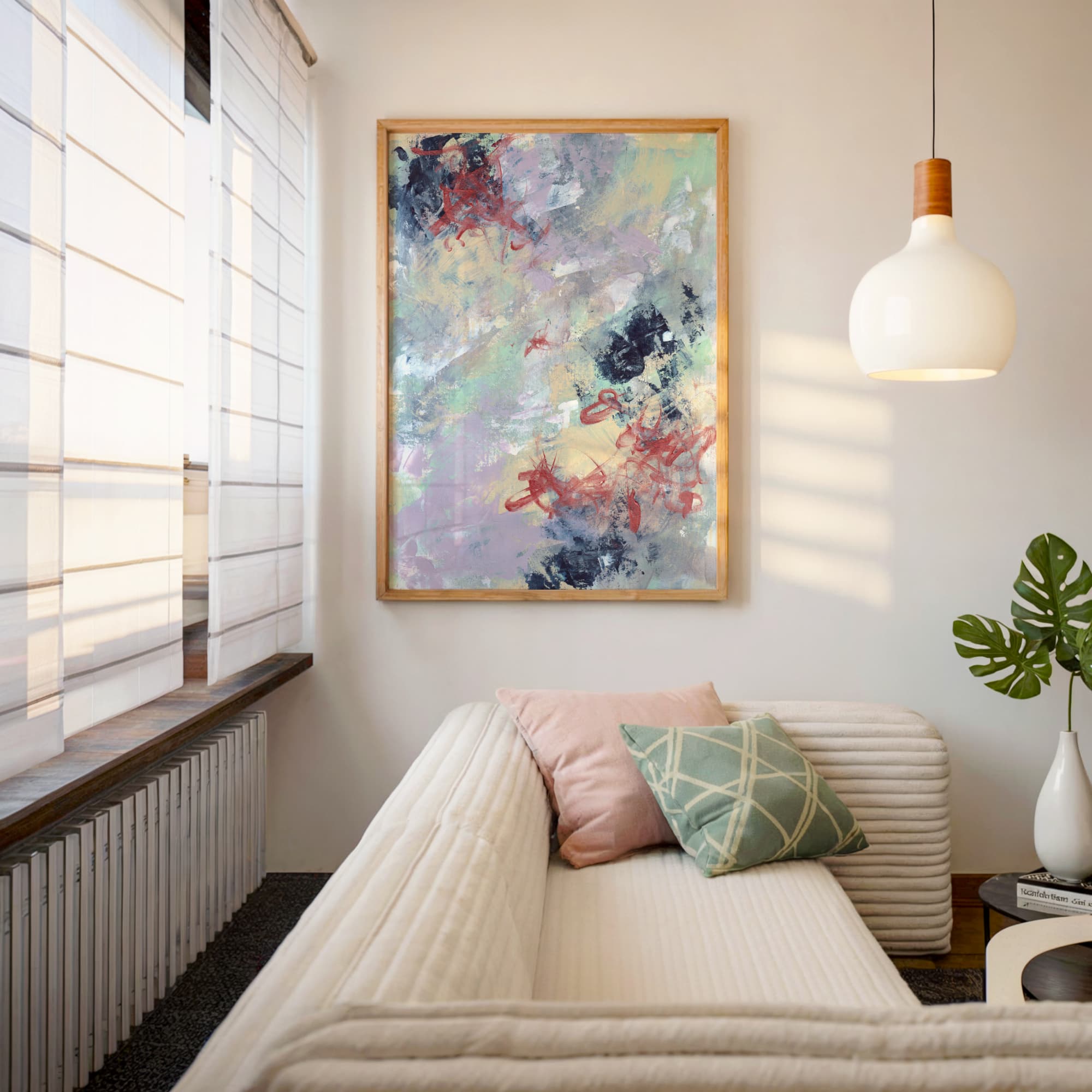
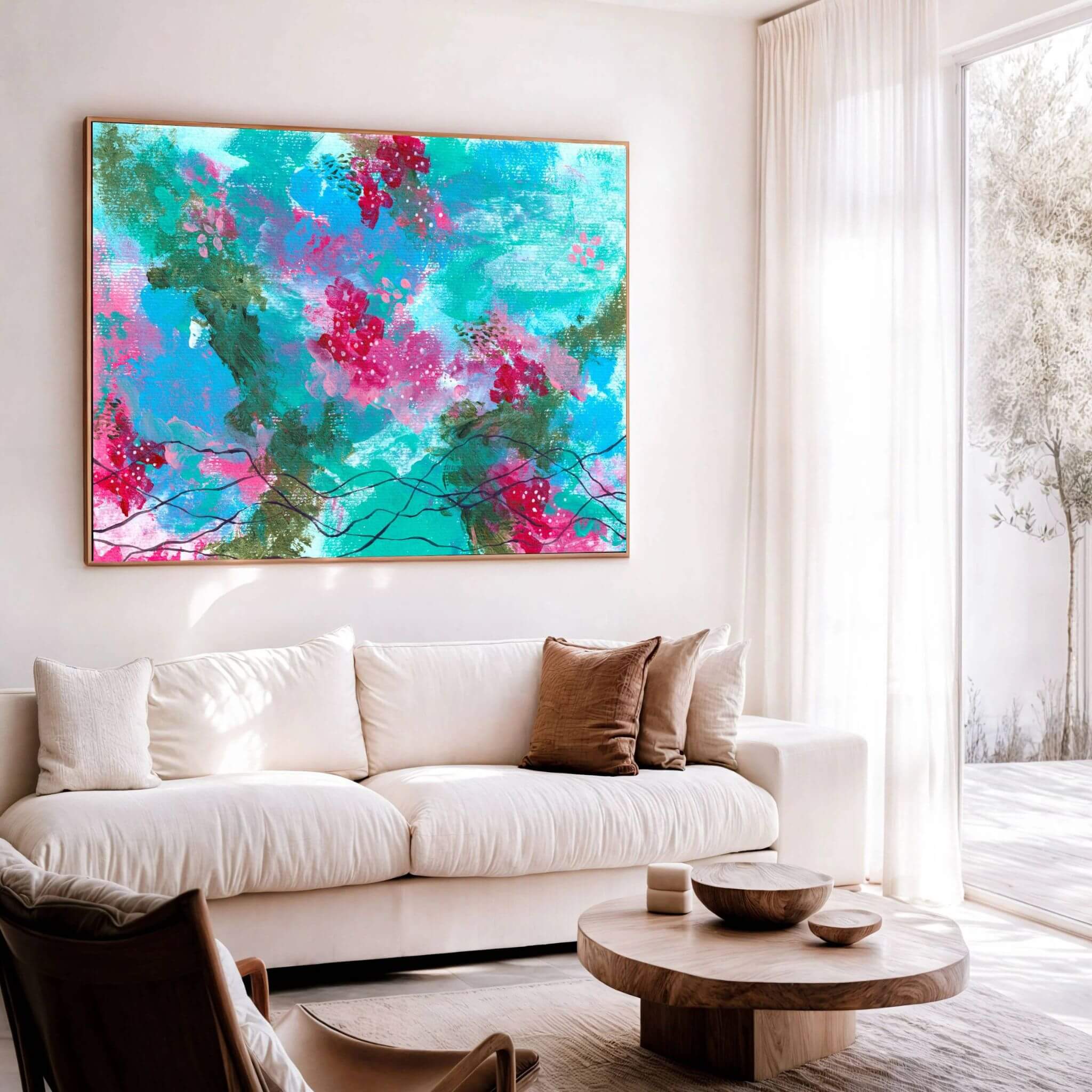
Emotional Weight vs Visual Impact: Understanding What Holds a Room
Most people think a luxury piece is one that grabs attention. But the most sophisticated collectors and emotionally intelligent designers know that true power doesn’t perform.
Emotionally resonant art doesn’t shout. It settles. It holds the edges of a space. It meets you again and again, differently, as you change. And in luxury spaces, where there is already enough performance, that weight is what brings a room to life.
You don’t want a visual climax. You want a visual exhale.
How to Read a Room Emotionally, Not Just Visually
Designers often ask, “What kind of piece should go here?” The more useful question is, “What does this room feel like, and what does it need to hold?“
To curate emotionally intelligent art, start with the emotional architecture of the space. Is it a place for stillness? Decision-making? Grief? Renewal? These aren’t marketing moods. They’re emotional states. And the right work doesn’t just fit the wall. It speaks to the room’s core emotional task.
Art is not the punctuation mark at the end of the design. It’s the pause in the sentence. If the energy of a room feels frenetic, choose a piece that introduces breath. If a space feels emotionally flat, bring in something that interrupts that numbness, gently, but clearly.
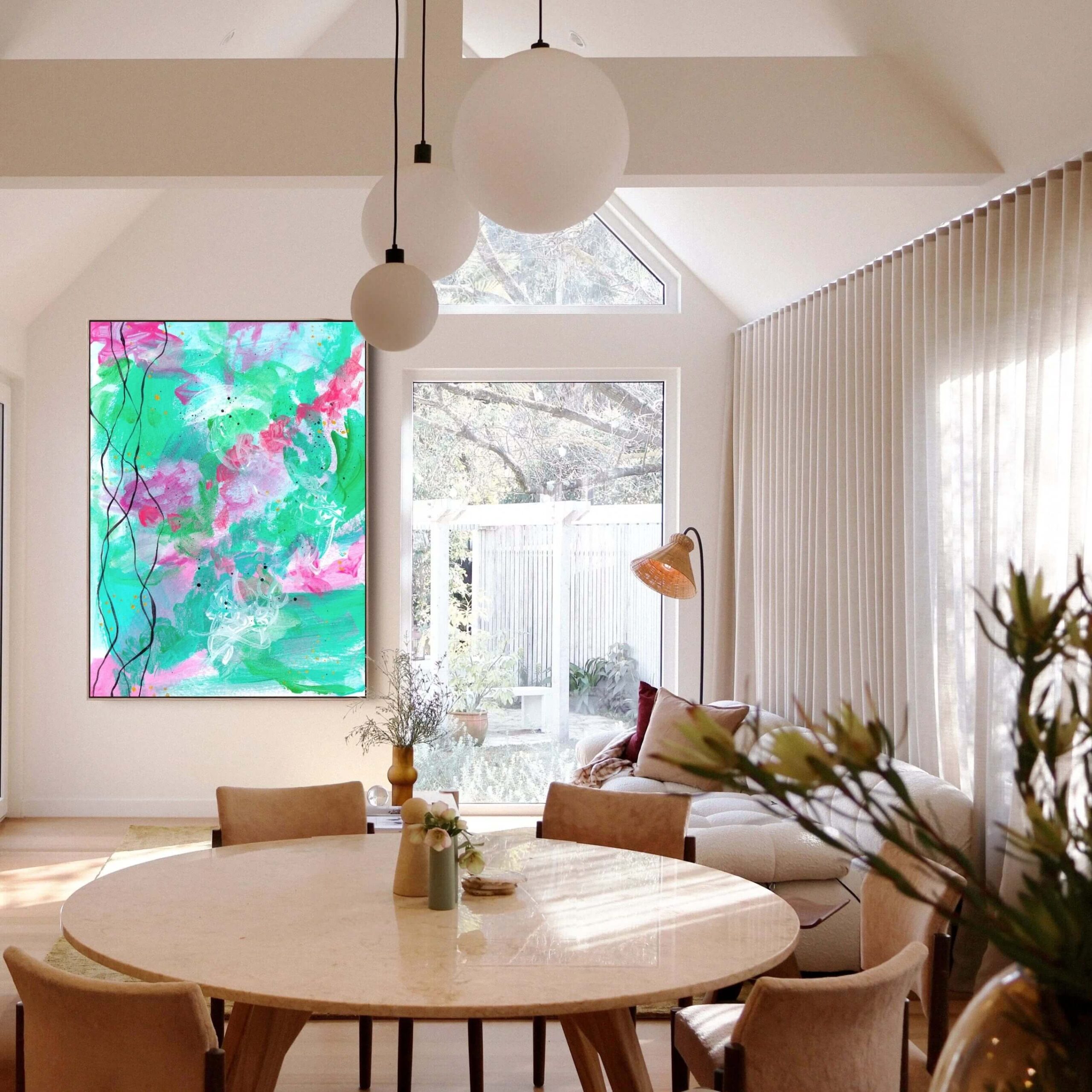
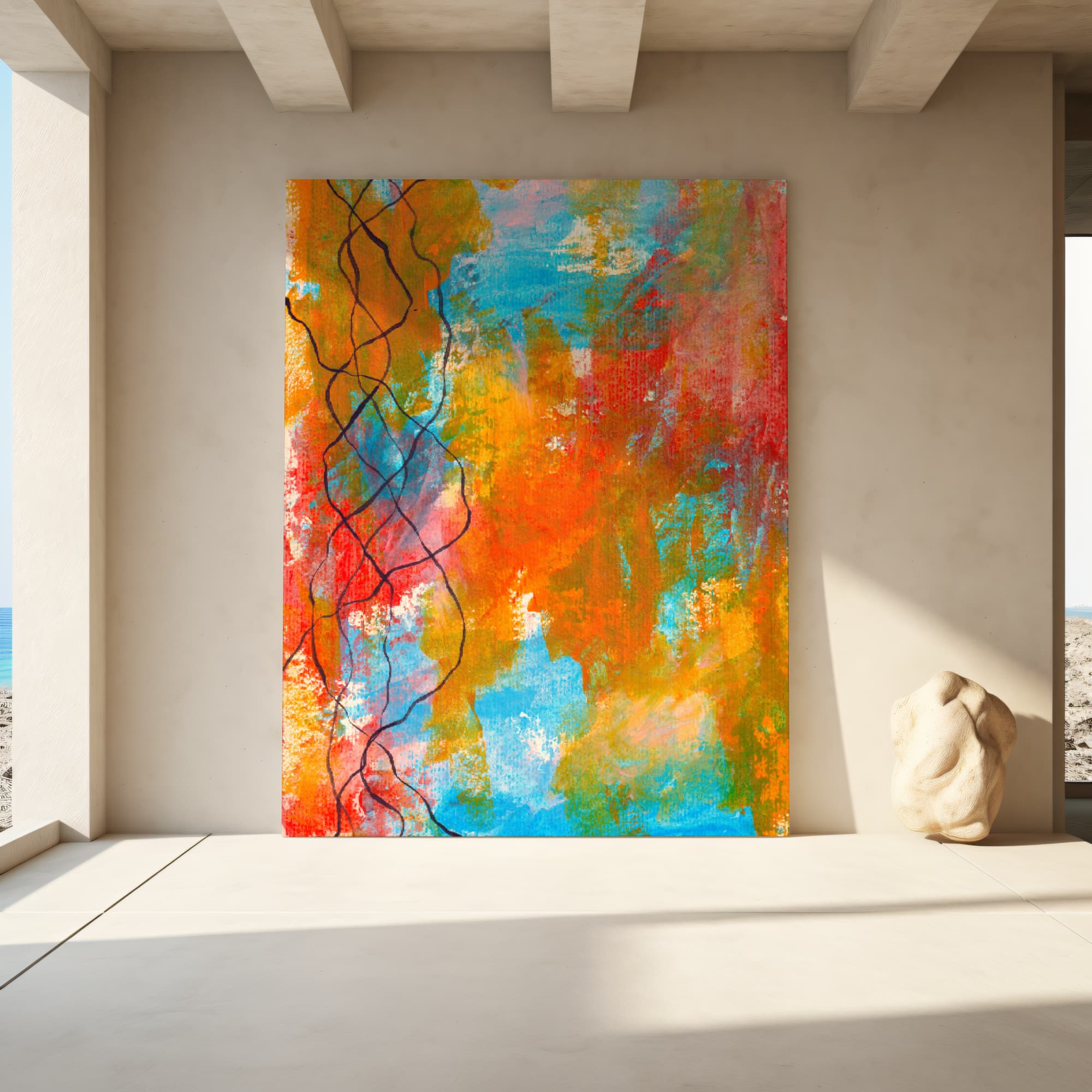
The Curation Process: Questions That Go Deeper Than Style
Forget colour theory and Instagram aesthetics for a minute. If you want work that holds emotional resonance, these are the questions to ask instead:
-
-
What truth needs to be allowed into this space?
-
What emotional residue do we want this room to carry?
-
What energy is already too present, and what could softly counter it?
-
Can this work be felt in silence? Without interpretation? Without context?
-
Does the work give something back, or does it just take up space?
-
These questions strip away the trend-chasing. They help you select work that not only fits a space, but also honours it.
Quiet Luxury Requires Quiet Authority
The phrase “art for luxury spaces” is often associated with prestige and exclusivity. But the new luxury is presence. And presence isn’t loud. It’s honest.
In emotionally intelligent interiors, the best abstract art becomes part of the room’s spine. It’s not background. It’s not filler. It’s a kind of architecture for feeling, calm, grounding, and clear.
Quiet luxury doesn’t mean safe or beige. It means considered. Intentional. Clear. The right piece doesn’t mimic the room. It deepens it.
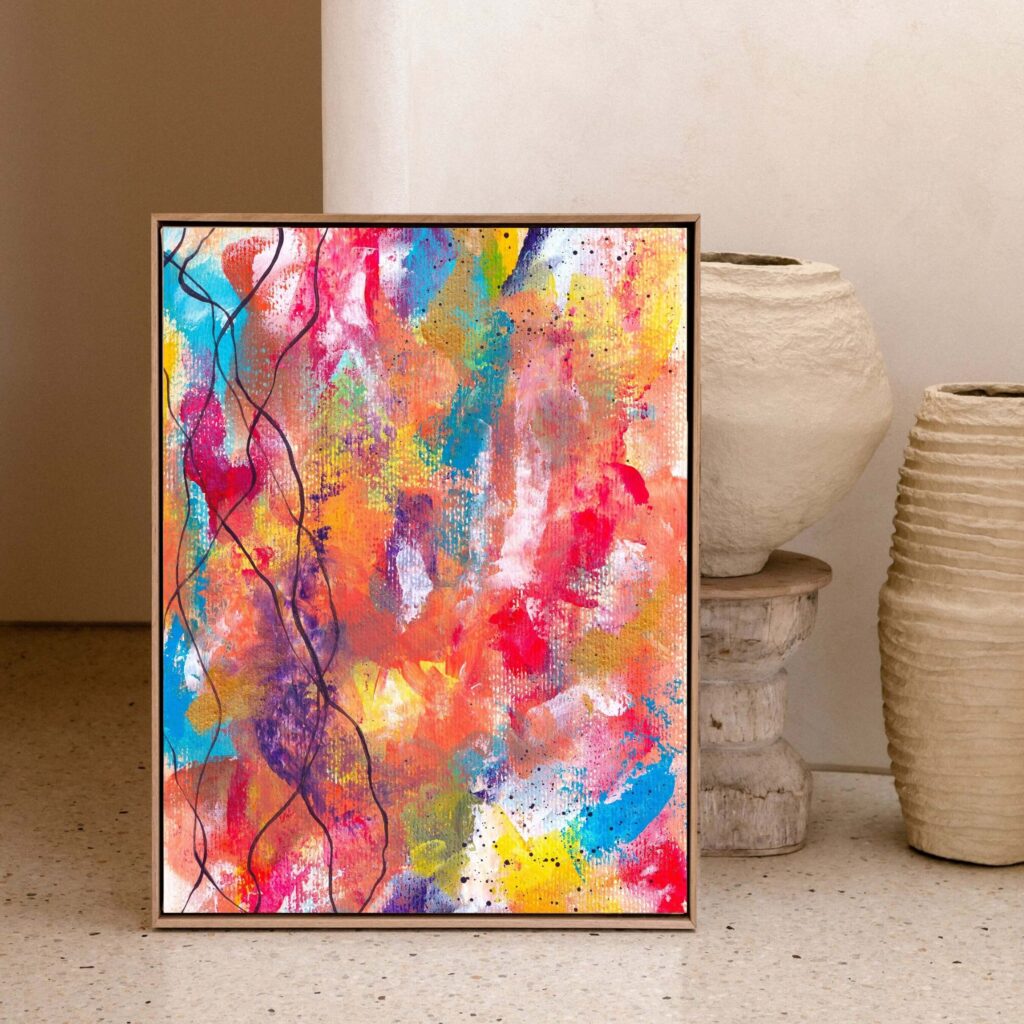
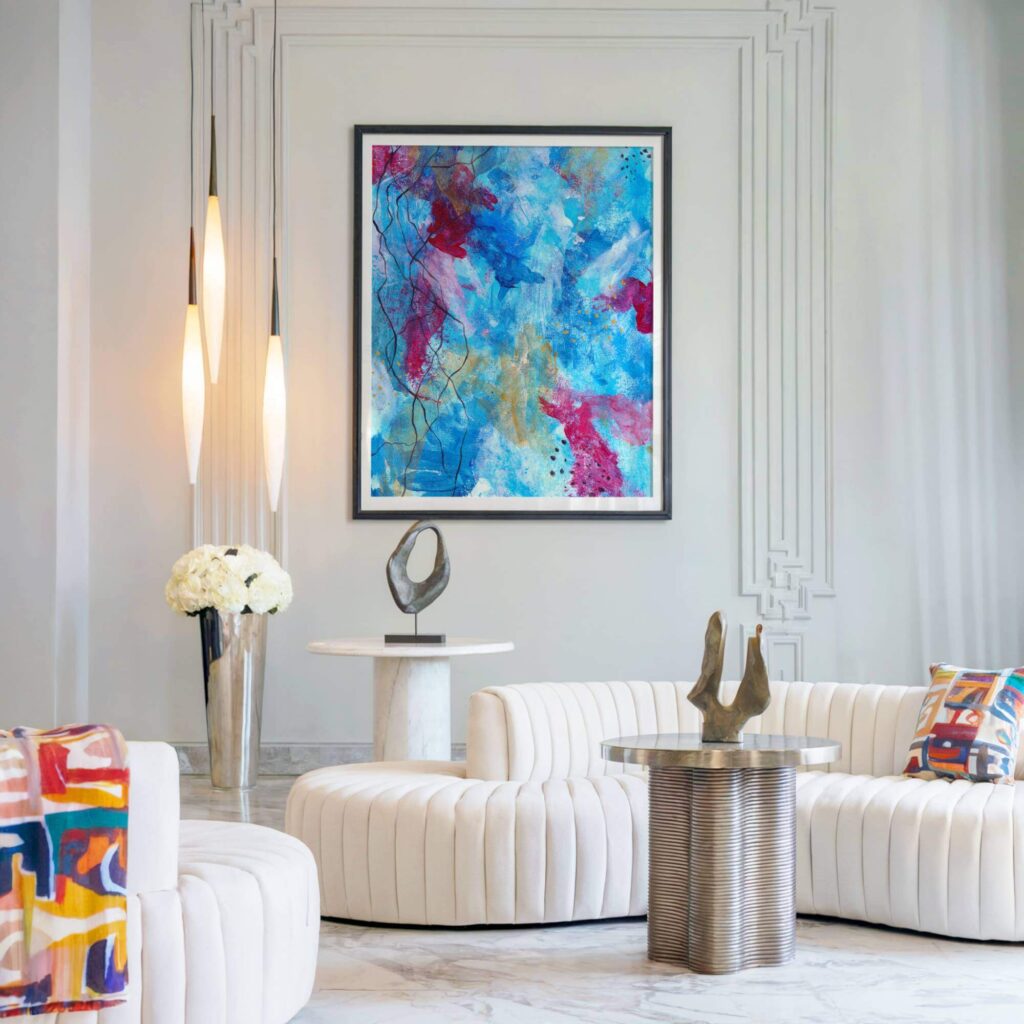
Placement Isn’t Styling, It’s Strategy
To place art for luxury spaces well, avoid the urge to over-coordinate. In other words, if you want the art to speak, you have to give it room to breathe. That doesn’t just mean physical space, it means conceptual space. Emotional space.
Avoid symmetry for the sake of safety. Avoid the need to fill every void. Negative space is part of the conversation. And if you’re working with emotionally charged work, give it its own rhythm in the room. It doesn’t need to echo the sofa. It needs to echo something internal.
Designers who understand this tend to curate slower. They’re less interested in pleasing the client’s Pinterest board, and more interested in how the space will feel six months from now, when real life settles in.
Art for Private Spaces vs. Public Ones: A Different Kind of Curation
Curating emotionally intelligent art for luxury spaces depends on context. In a retreat suite or boardroom, you’re choosing work that offers shared resonance. It needs to touch many, without diluting its meaning.
In private interiors, you can go deeper. You can curate art that reflects grief, transition, inner stillness. This is where art becomes a mirror, not just a feature.
Collectors and designers should consider what emotional story the space tells, and what kind of art belongs in it.
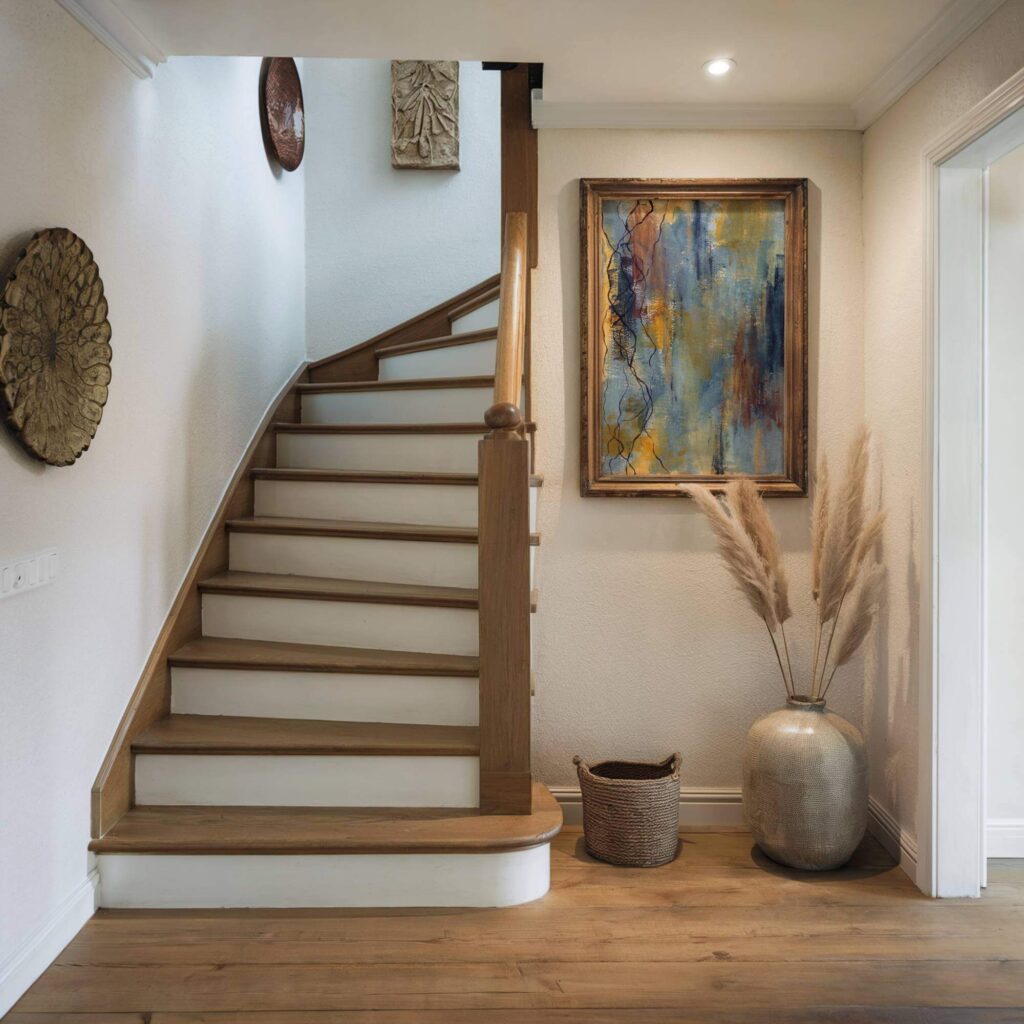
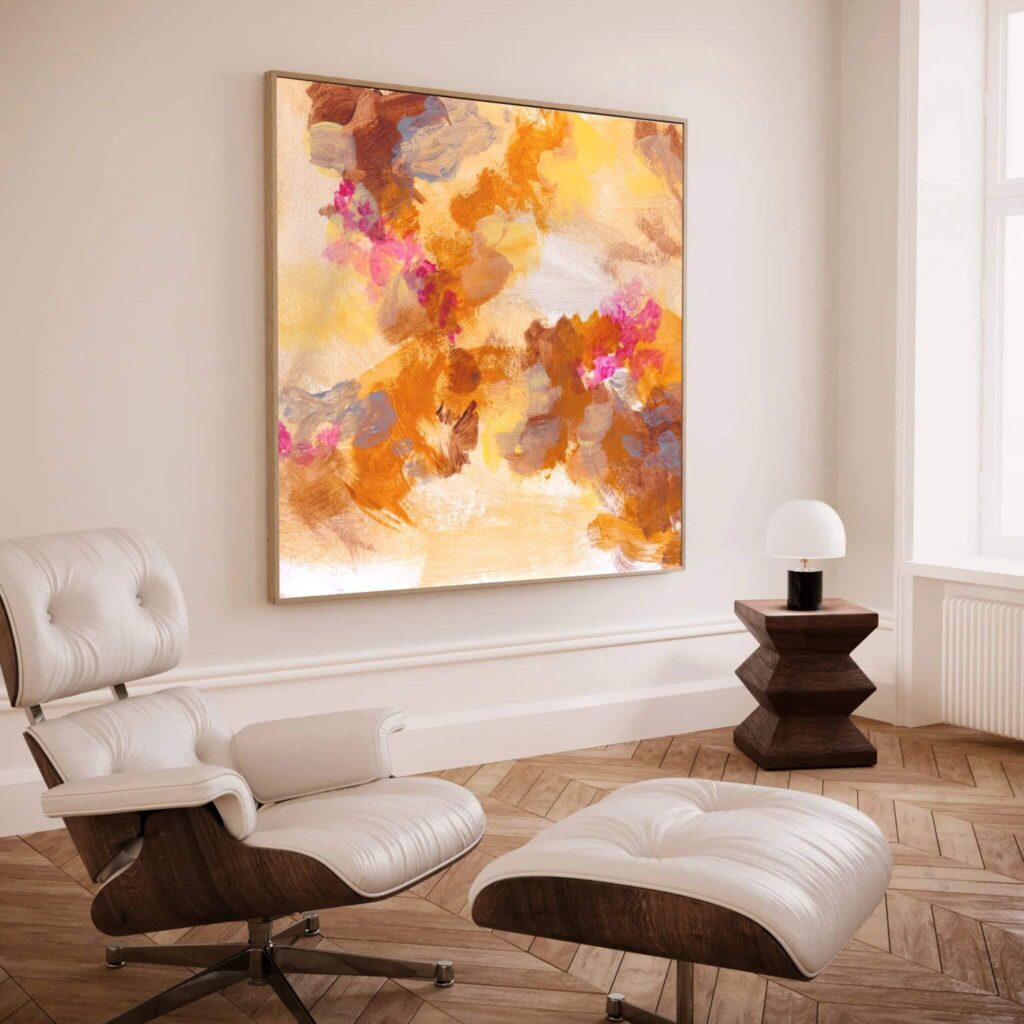
Working With Artists: Emotional Translation, Not Just Briefs
If you want work that holds, not just hangs, treat the artist as a partner, not a supplier. You’re not ordering visuals. You’re co-creating emotional anchors.
The best collaborations happen when designers share emotional context, not just dimensions and colour swatches. When they say, “This room needs to feel like clarity,” instead of “We’re looking for something 120×80 with blue tones.”
Artists can’t make emotionally intelligent work if they’re only briefed through moodboards. Speak in feeling. And trust their process, especially if it’s slow.
How I Curate My Own Work for Collectors
My emotionally resonant works aren’t bought off a shelf. They’re placed. I ask collectors what they’re living with, what they’re seeking, and what kind of presence their space needs.
Legacy Thread wasn’t designed to match a room. It was made to anchor emotional repair. When designers and collectors enquire about my work, we speak first. We find the work that belongs, not what simply fits.
This is how art for luxury spaces should be chosen: through dialogue, not algorithms.
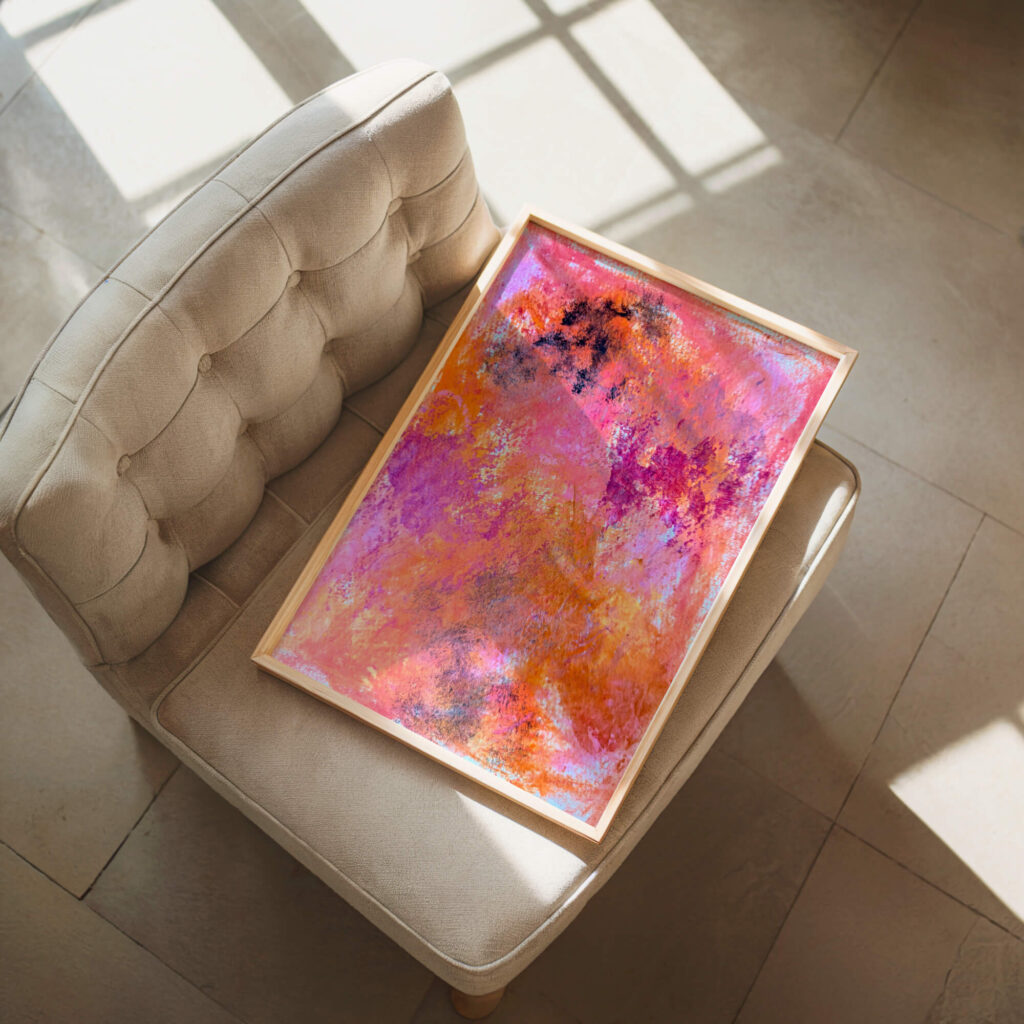
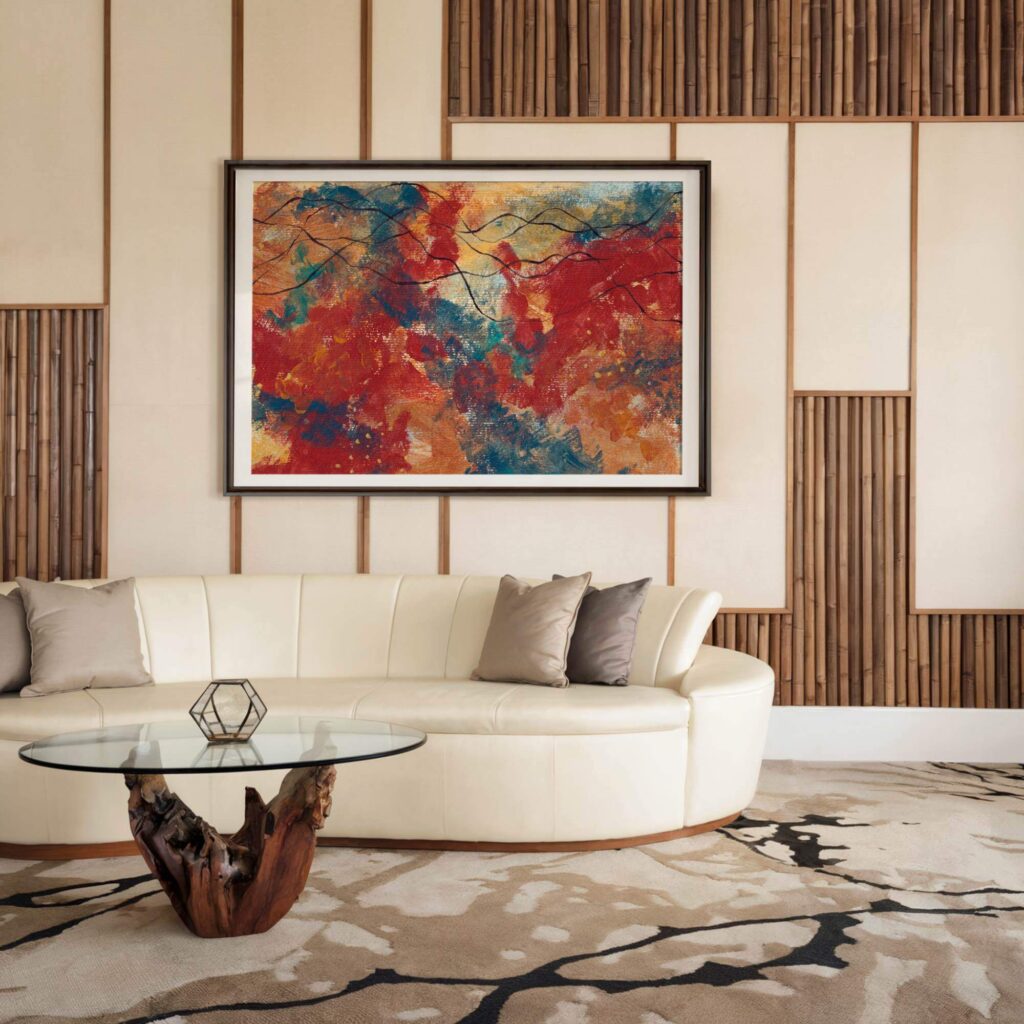
Legacy vs Trend: What Actually Lasts
Design trends pass. Emotional gravity doesn’t. If you want a collection that still holds five years from now, you need to curate for clarity, not noise. So when curating art for luxury spaces, choose for meaning, not movement.
Legacy Thread was built in a season of deep personal restoration. It wasn’t designed to match a room. It was built to hold presence. That kind of work doesn’t date. It deepens.
Collectors who value this aren’t looking to show off. They’re looking to build spaces that let them feel more like themselves. And that’s what emotionally intelligent collecting is all about.
The Vault: Quietly Available, Deeply Considered
The Collector’s Vault is not hidden, but it’s not broadcast. It’s there for those who already know what they’re looking for, emotionally resonant work that anchors, not just fills. You won’t find fanfare or sales tactics. Just presence, and pieces chosen for their ability to hold space.
Designers and collectors looking for work with emotional weight can explore the Vault anytime or reach out directly to enquire about Legacy Thread.
My Offerings
Whether you’re a private collector, a wellness-focused brand, or a designer sourcing for a high-calibre project, I offer art that resonates deeply and subtly.

Collector's Vault
Canvas prints from the archive, made with emotional resonance and sustainable materials for spaces seeking depth.
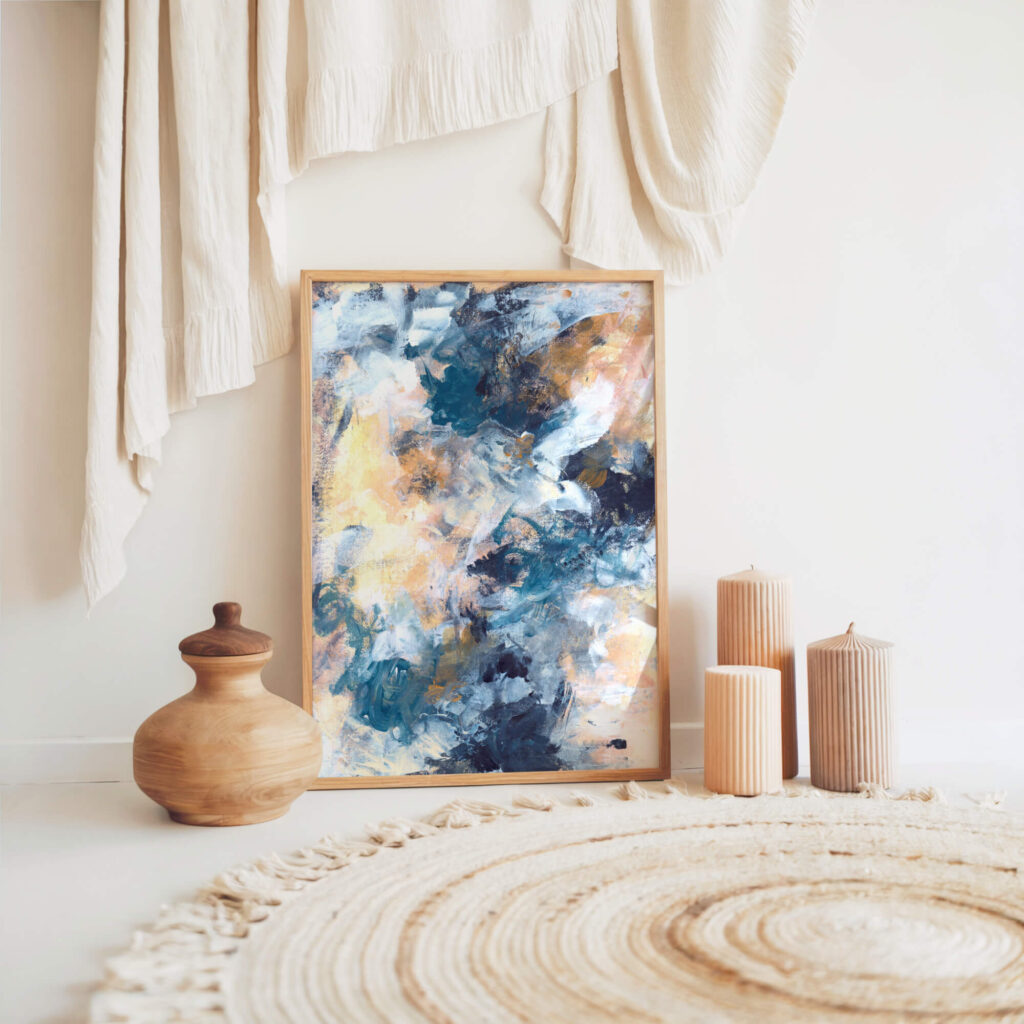
Capsule Commission
Created privately, one at a time, through stillness and reflection. Limited spaces each season to preserve depth and intimacy.
The Last 10
Ultra-limited, hand-embellished editions. No more than ten will ever exist. Made to ground, steady, and hold presence at the highest tier.
Conclusion: Curation as Emotional Responsibility
Art in luxury spaces shouldn’t shout. It should speak. And what it says should feel true.
If you’re curating interiors where emotional depth matters, whether for private homes, wellness retreats, or high-end offices, abstract art can become the most emotionally powerful element in the room. If chosen with care.
Start with resonance. Let presence guide the placement. And choose art that belongs not just in the space, but with the person who lives inside it.
